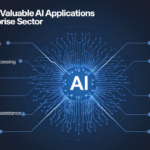No Robot Bosses Act
AI regulations currently under review or being implemented at the federal level are not tied to the political timeline of a specific administration. Regulatory processes are typically guided by ongoing legislative procedures, executive orders, and agency rules. Here’s why waiting for a potential future administration, such as one led by Donald Trump, is unlikely to impact the trajectory significantly:
It is unlikely that current regulatory efforts will halt to wait for a potential Trump administration. However, a future administration may influence how these regulations are enforced or expand certain AI priorities, such as innovation over regulation.
Administrative Continuity:
Once an executive order is signed or regulations are implemented, they often remain in effect unless actively repealed or replaced by subsequent administrations. For example, President Biden’s October 2024 AI-focused executive order has already initiated specific deadlines and processes for federal agencies, making it harder to delay or reverse.
Legislative Momentum:
Many AI-related bills, like the No Robot Bosses Act or Protect Elections from Deceptive AI Act, are being debated in Congress. If passed, they would require bipartisan action to repeal, which is a complex and lengthy process.
Market and Global Pressures:
The rapid growth of AI and its global implications make immediate regulation a pressing issue. Delaying regulatory action to wait for a new administration could risk losing technological leadership or failing to address urgent risks like deepfakes or algorithmic bias.
Potential Policy Shifts:
If a Trump administration takes office in 2025, it may prioritize deregulation, as it did during Trump’s first term. However, national security, election integrity, and financial fraud concerns tied to AI may still necessitate targeted actions, regardless of broader deregulatory aims
In November 2024, updates on U.S. federal government regulation of artificial intelligence (AI) have continued to emphasize accountability, transparency, and safeguarding against misuse. Notable advancements include:
OMB’s Finalized AI Guidance:
The Office of Management and Budget (OMB) issued final guidance for federal agencies on AI governance, focusing on pre-deployment risk assessments, transparency, and public consultations. Agencies are now required to provide mechanisms allowing individuals to opt-out of AI-driven decisions and use human oversight instead. Additionally, the guidance enforces risk management practices, particularly around sensitive applications like biometric identification systems
Sector-Specific AI Legislation:
Bills like the No Robot Bosses Act and the No AI Fraud Act remain under congressional review. These initiatives aim to regulate AI use in workplaces, protect individuals’ likeness and identity, and address generative AI’s potential for spreading misinformation or fraud
Election and Financial Security Measures:
The Protect Elections from Deceptive AI Act and Preventing Deep Fake Scams Act focus on combating AI misuse in elections and the financial sector. These include penalties for spreading deceptive AI-generated content about election candidates and recommendations to prevent AI-driven financial fraud.
These developments reflect a multifaceted approach to regulating AI, balancing innovation with critical safeguards against potential societal harms. For the most detailed and current information, you can explore resources like the OMB AI governance page or the U.S. Congress legislative database.









